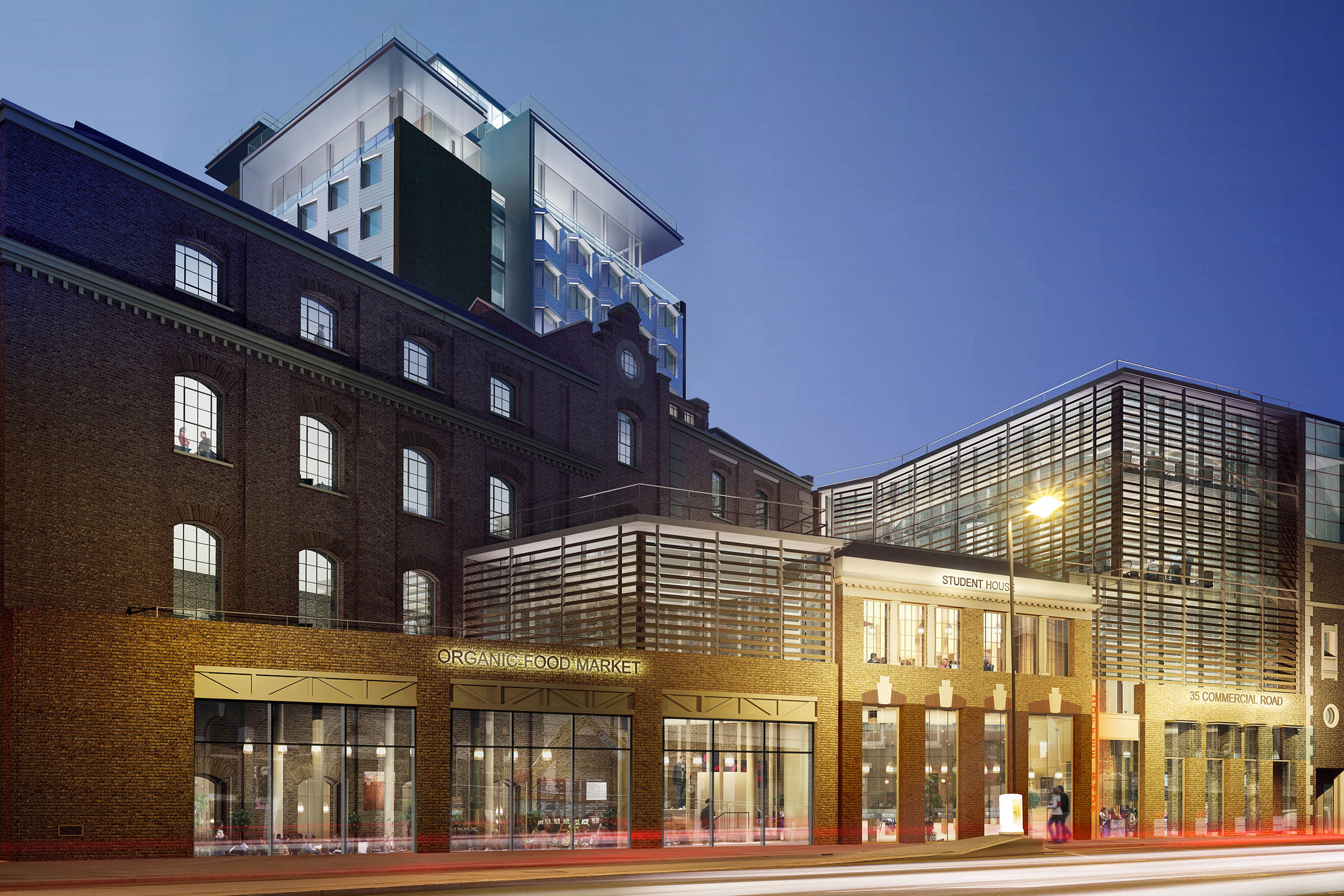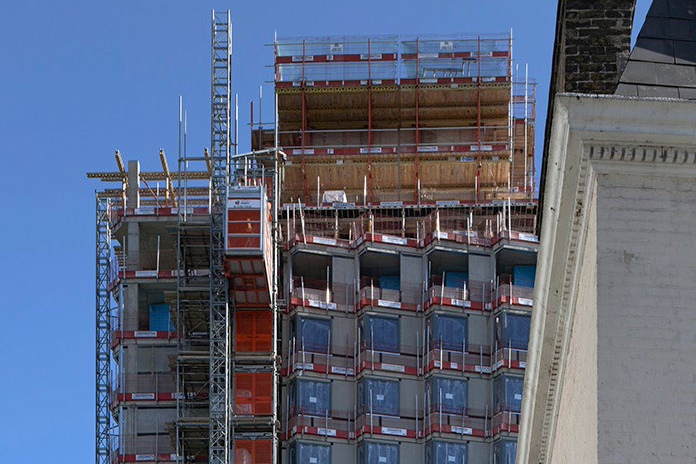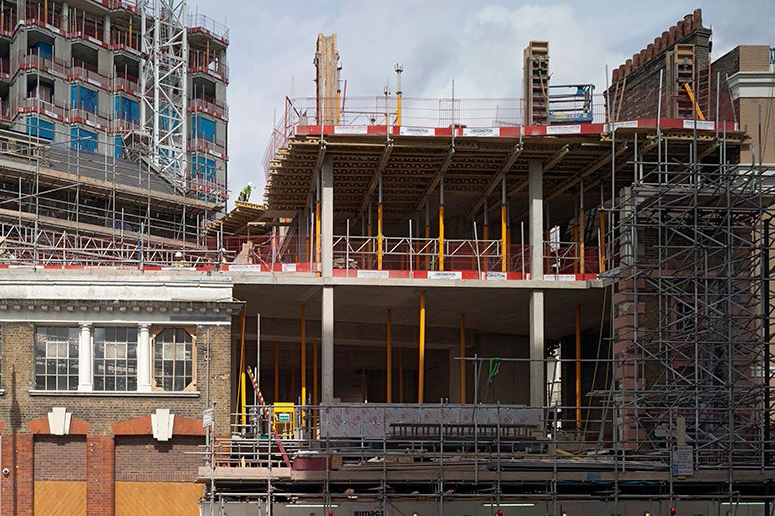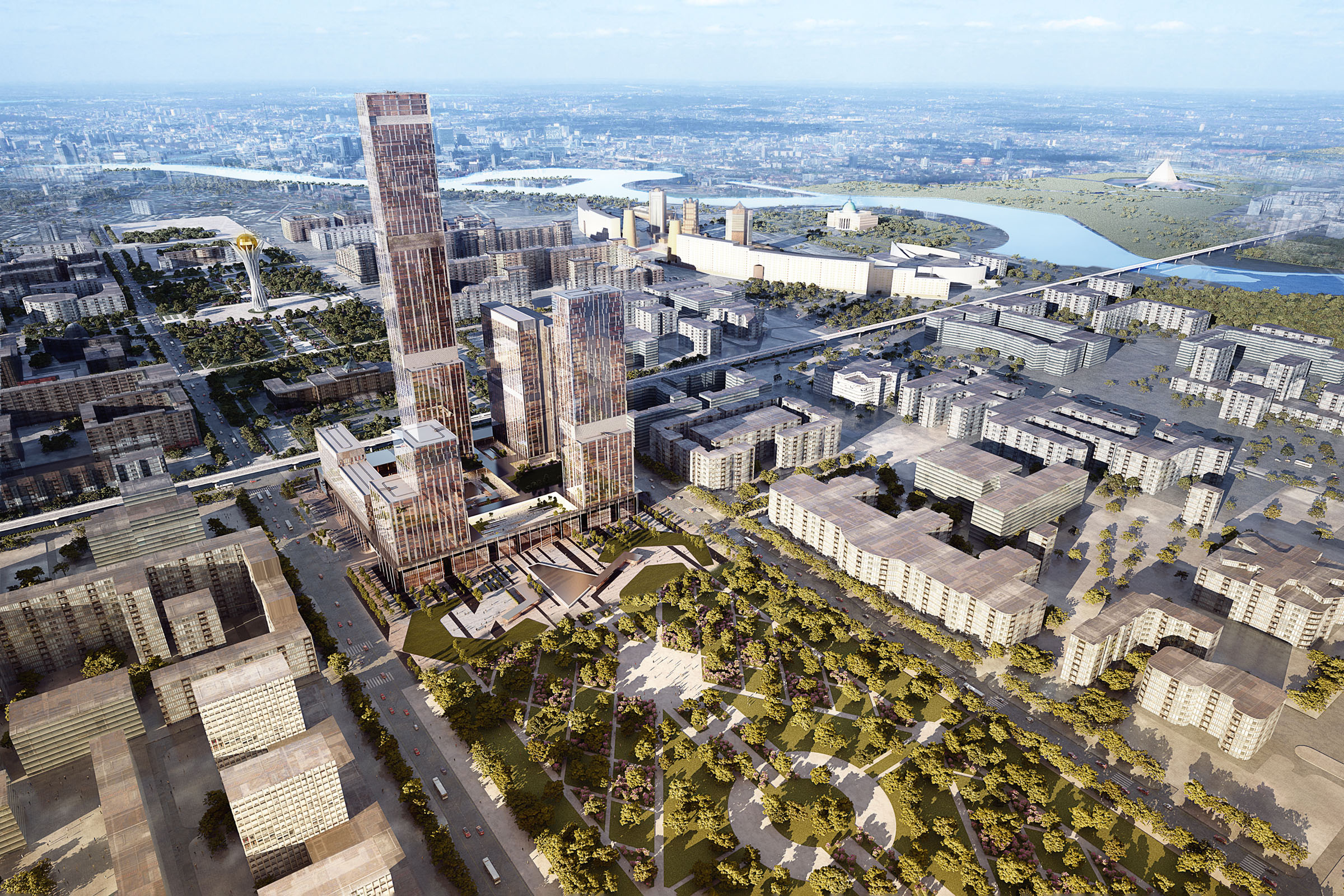
23.07.25
Case Study
Commercial Road is a student housing led mixed-use development that includes a new build 19 storey zinc clad tower, a refurbished Grade ii listed building and new office and retail space.
When completed in April 2013 the project will provide 346 high quality student rooms with generous amenity space and over 3,500m2 of commercial space.
Located close to Aldgate East Tube, Brick Lane and Shoreditch, Commercial Road is in a superb location which is popular with London’s students, new businesses and creative industries. From the upper floors of the building you feel at the very centre of London with views of all its main landmarks.
The site is 0.367ha and was occupied along its northern part by a car park with the remainder of the site occupied by a range of retail and employment spaces all within the former St George’s Brewery, which is a Grade II Listed Building and some smaller associated buildings along Commercial Road and Assam Street.
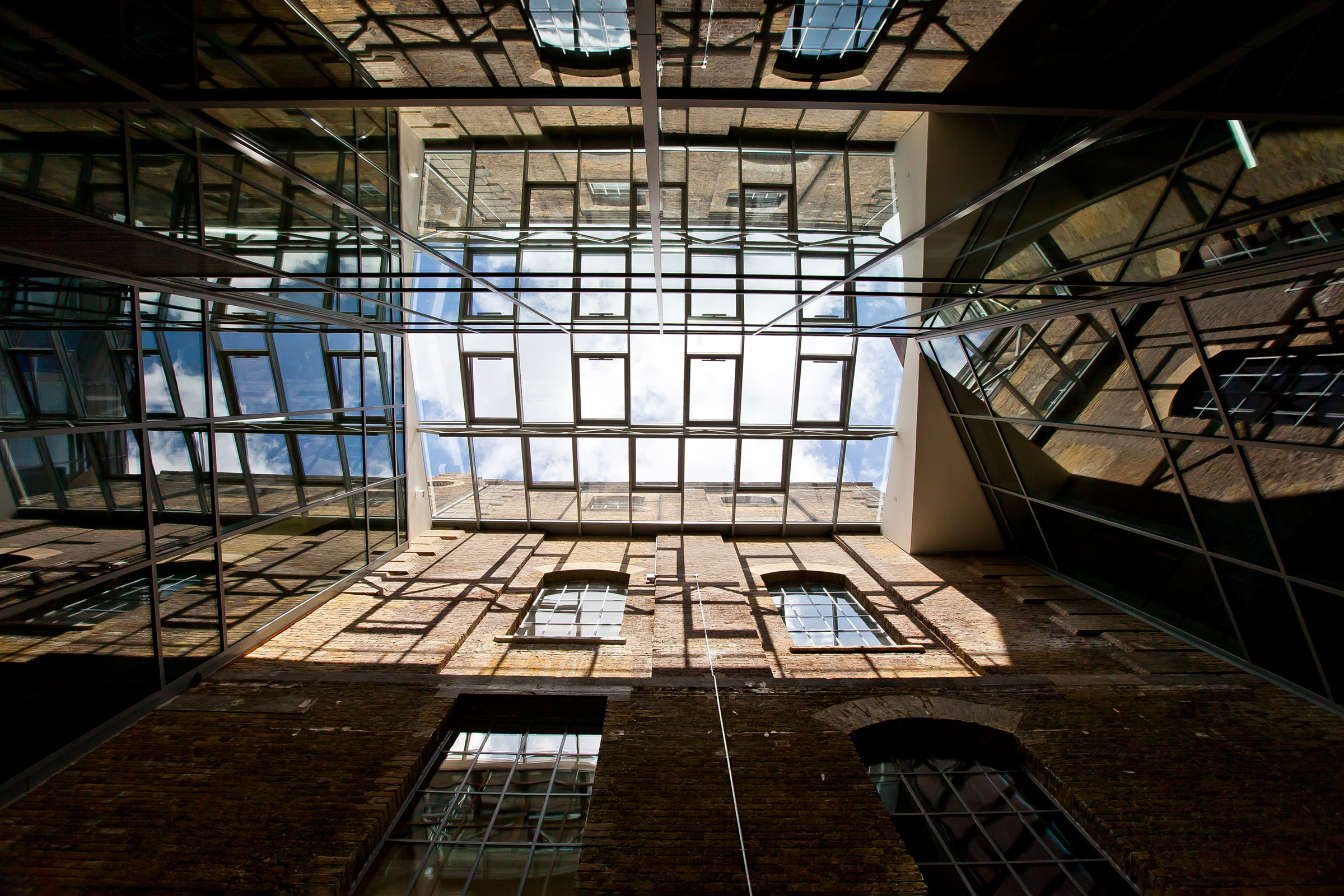
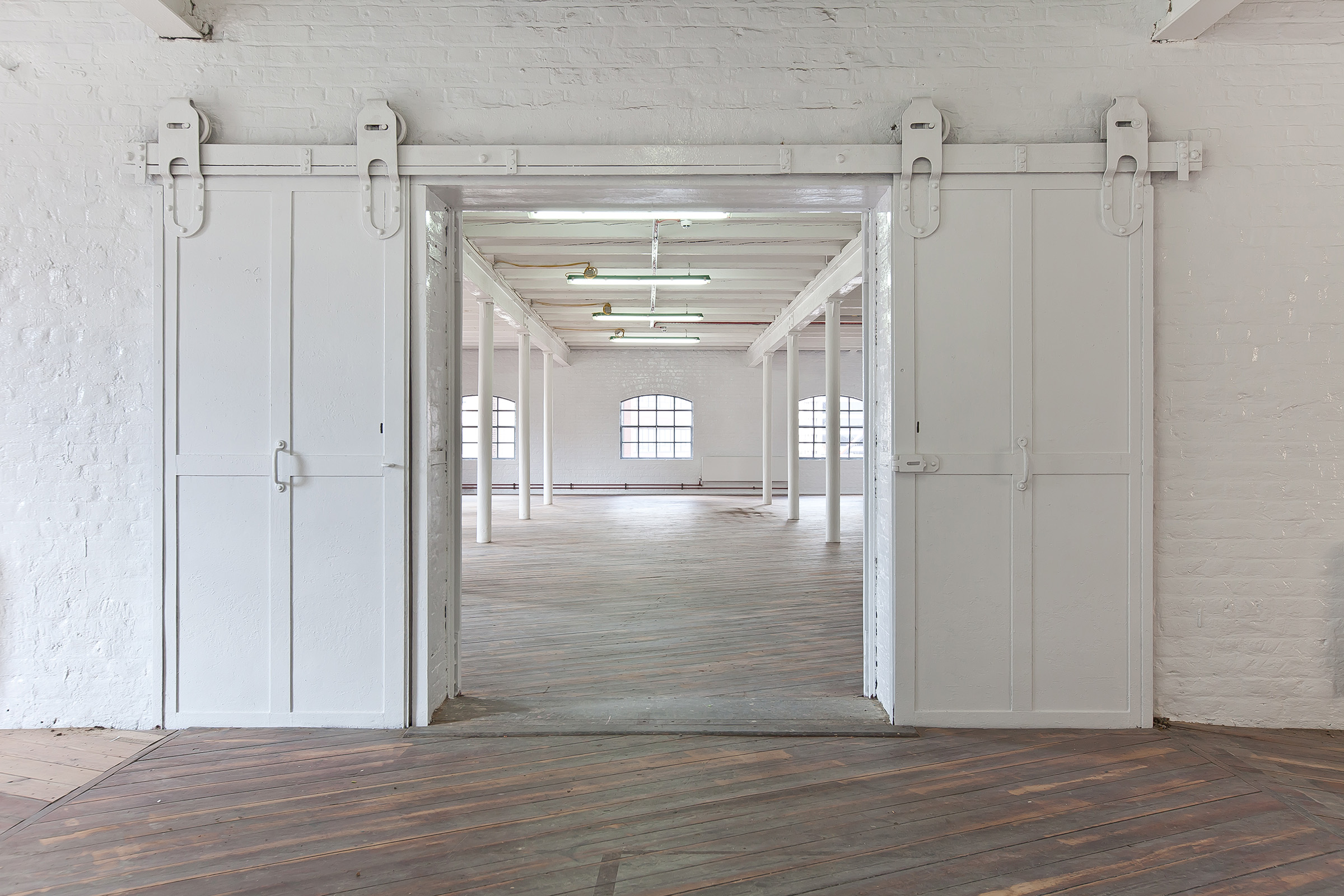
The listed building was built in 1847. The original building with its cast iron columns and beams and masonry walls was converted to use as a whisky warehouse in 1901. Substantial additional areas of warehousing were then added to the front and rear of the building. The building was subsequently listed in 1973 in response to a threat of demolition.
Appointed in 2010 HKR were tasked to review the design of a scheme in order to:
— Drive additional value into the previously consented proposals. This was achieved by reducing footprint; increasing the number of units and diversifying the mix and types of units for rent
— Reduce its costs through enhanced efficiencies and by taking a fire engineering approach to means of escape
— Enhance the schemes buildability though close liaison with the main contractor Mace, whilst at the same time protecting the scheme’s design without the need for a new planning application which would have delayed the build programme.
Whilst at the same time protecting the scheme’s design without the need for a new planning application which would have delayed the build programme.
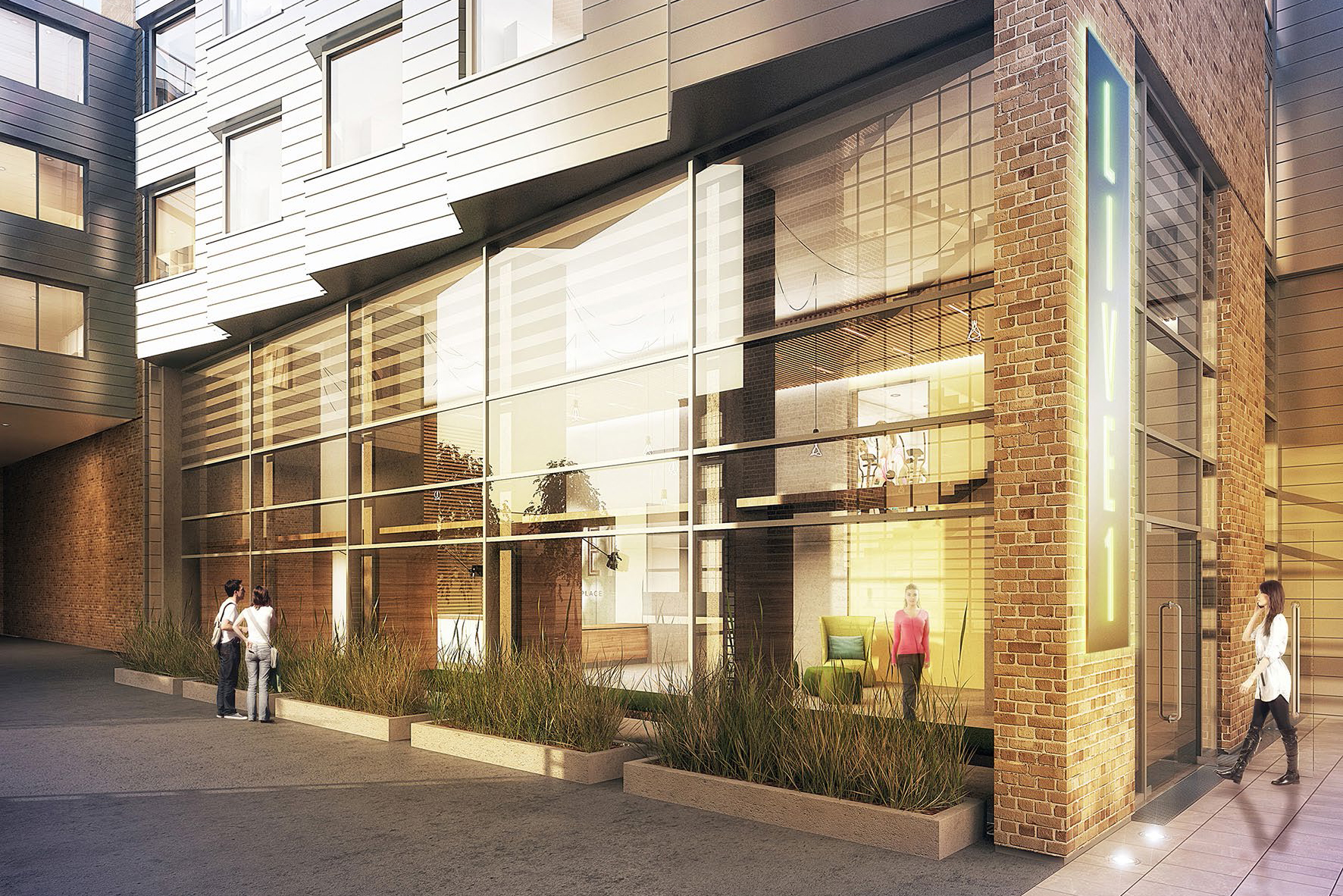
HKR’s design assessment and validation concluded that efficiencies could be achieved in the tower building by:
Reducing the footprint of the proposed basement to the within the outline of the prior existing basement areas and minimising its depth to that required to comfortably accommodate plant and equipment.
Reconfiguring the ground and first floors. The net internal area was increased by reconfiguring the vehicle access route so that vehicles no longer circulate around the main core but enter and exit the site through a more constrained hammer head.
Relocating many of uses accommodated in the basement to the ground and first floors and in doing so providing an active frontage and reception area whilst eliminating a poor quality under croft.
Removing one of the two stairs from the main vertical circulation core, allowing for reduction in the core footprint and better use of the core.
In carrying our an in-depth review of how means of escape worked at all levels, the dominant race track model of circulation was adapted so that corridors could be incorporated into residential floor space. This allowed for the formation of an increased range of accommodation types to meet market demand and enhanced amenity provision.
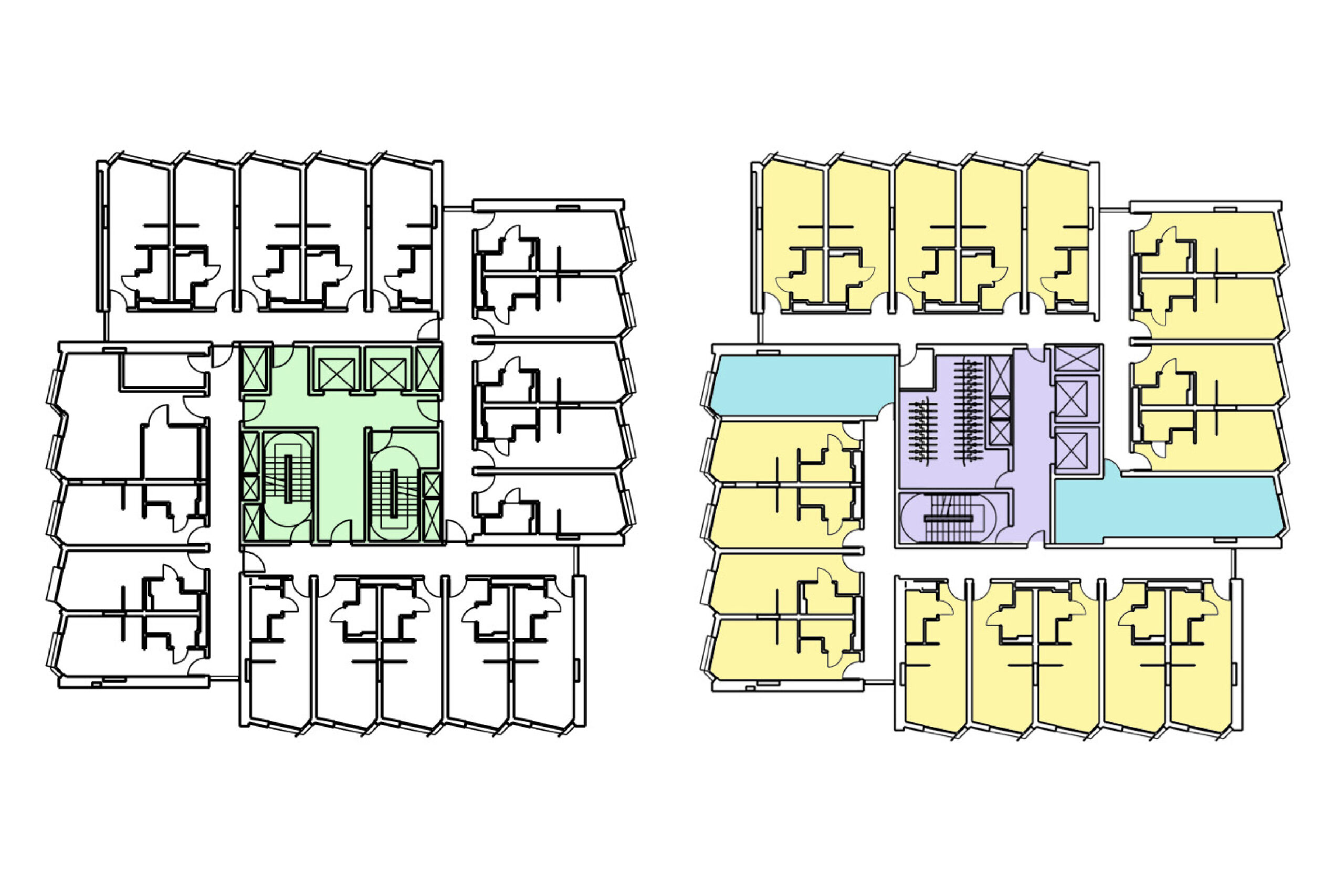
Efficiencies in Assam Street were likewise increased by reviewing the fire strategy. This allowed for the omission of one of the escape stairs and its replacement with an additional room at all five levels.
Within the office space, HKR’s understanding of how offices work best and how means of escape strategies can be maximised led to the reconfiguration of the floor space to increase NIA and overall efficiencies. The careful re-proportioning of the building’s internal light well enhanced the quality of internal lettable space and improved the new building’s relationship with the listed historic façade of the brewery building.
All of these proposals were implemented through the use of a Section 73 provision within the terms of the existing planning consent so that further planning applications were not required and the programme maintained.

The tower building is nineteen storeys high with accommodation arranged in wings around a central core. Reception, student welfare and social spaces are located at ground, first and the double height seventeenth floor sky lounge which has a gym looking easts toward the Olympic Park and a library bathed in northern light.
The ground floor reception is a generous double height space that is overlooked by a first floor exercise room. It walls and floors are finished in raw concrete that is offset by warm a Baltic pine timber dropped ceilings and reception furniture – a reference to the timber of the same family used in the adjacent brewery building.
The café, also on the ground floor, is finished in a similar aesthetic but with painted plaster and a lively green coloured epoxy resin floor. It faces facing into an internal courtyard which is be an oasis of calm and reflection for the building’s users.
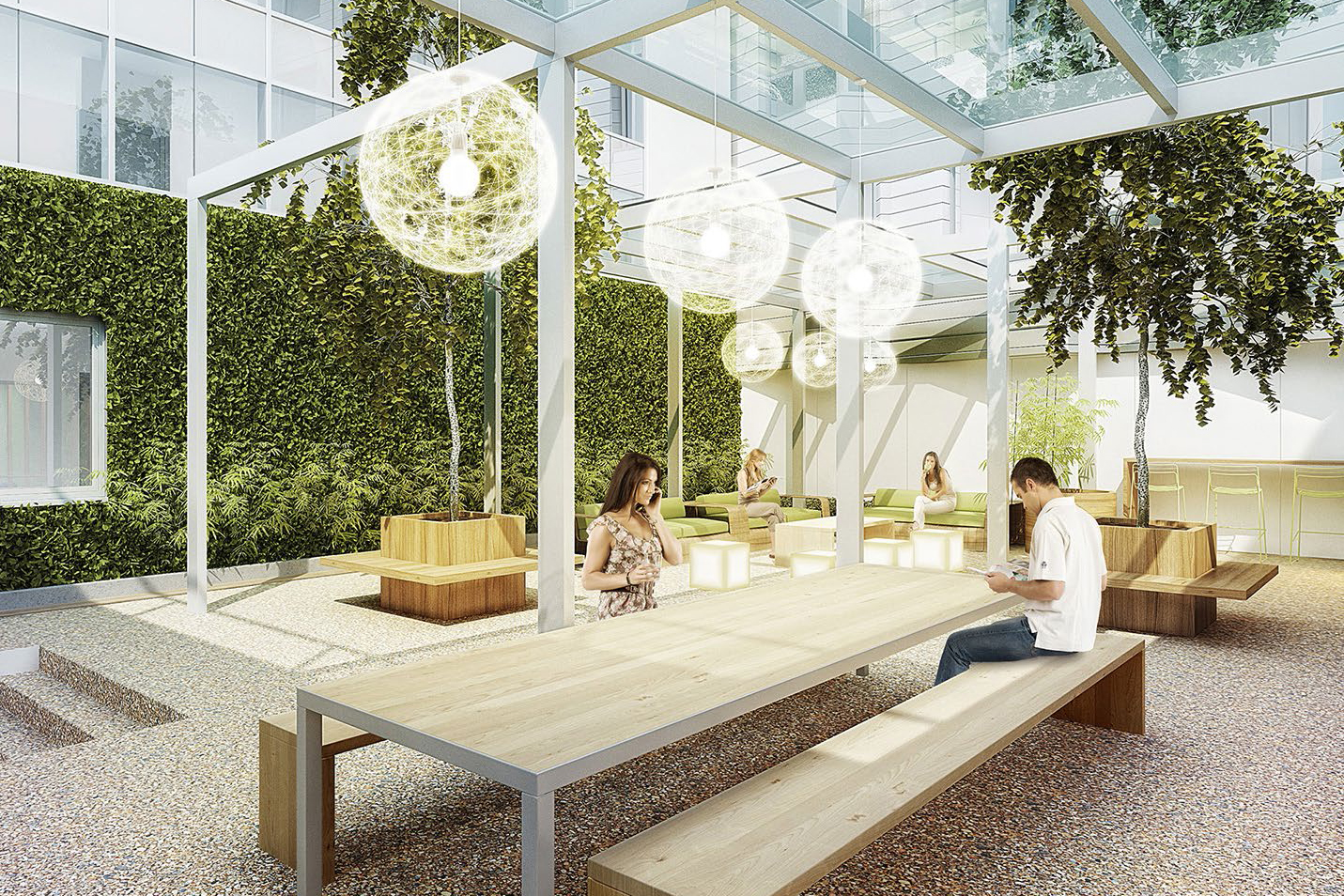
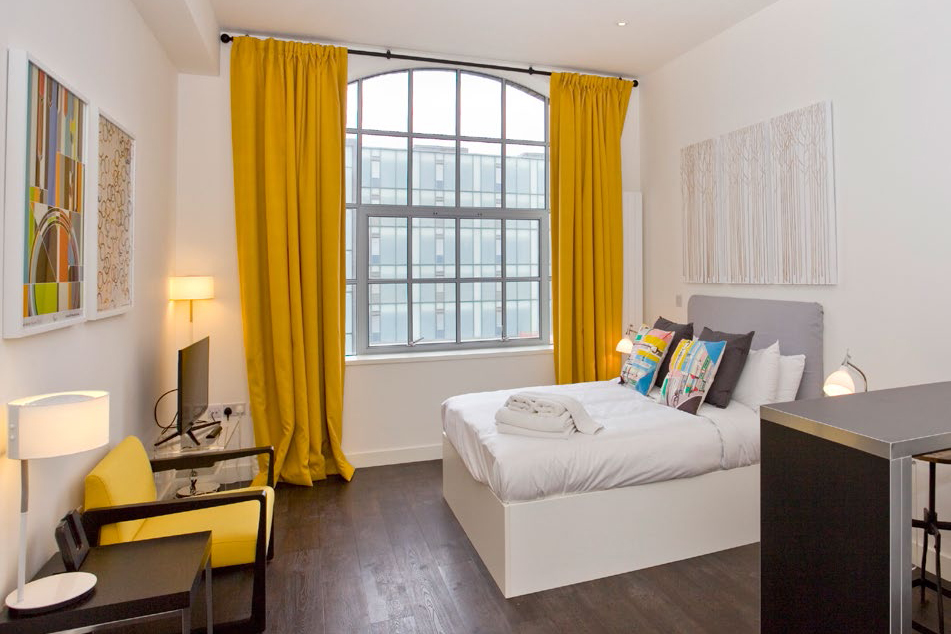
The tower building is relatively traditional in construction with a reinforced concrete core, precast columns and edge beams and flat slab infill between the beams and core walls. Pod bathrooms manufactured off site are used throughout with high performance stud partitions between rooms and to corridors.
Total modular construction was considered and though ideal in many respects for student accommodation it would have not have allowed for the longer term building flexibility and adaptability required by the client and their financial investors.
Construction Phase
The building is clad in a blue grey zinc rain screen. This material will reduce cleaning requirements. As it is a natural material which self gains a patina that is highly attractive and protective. Having considered the use of powder coated aluminium the decision to use zinc was based on both aesthetics and the desire to offset on-going maintenance costs associated with the regular cleaning of aluminium. The coolness of zinc cladding is contrasted with the use of a warm classic yellow stock brick on the flank walls of the building’s wings.
The approach to the listed building was one of minimal intervention and great care – a light touch approach driven by the desire to reveal the best of the existing fabric; to celebrate its unique history and architecture. To achieve this bespoke double glazed windows manufactured from specially formed steel sections were used to the street fronting elevations, brickwork stitched together and roof repaired using existing slate together with selected second hand slate where required. Most of the building is left ‘as found’ with minimal cleaning to ensure that the history of use and the wear is not lost.
Demolition commenced in October 2011 and construction in January 2012. The conversion of the existing Assam Street warehouse into 29 units was completed in May 2012 in time for the London Olympics Games. The commercial element of the project completed February 2013 and full practical completion in April 2013.
